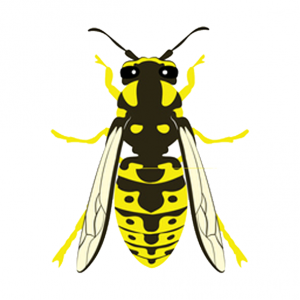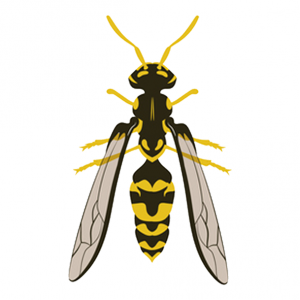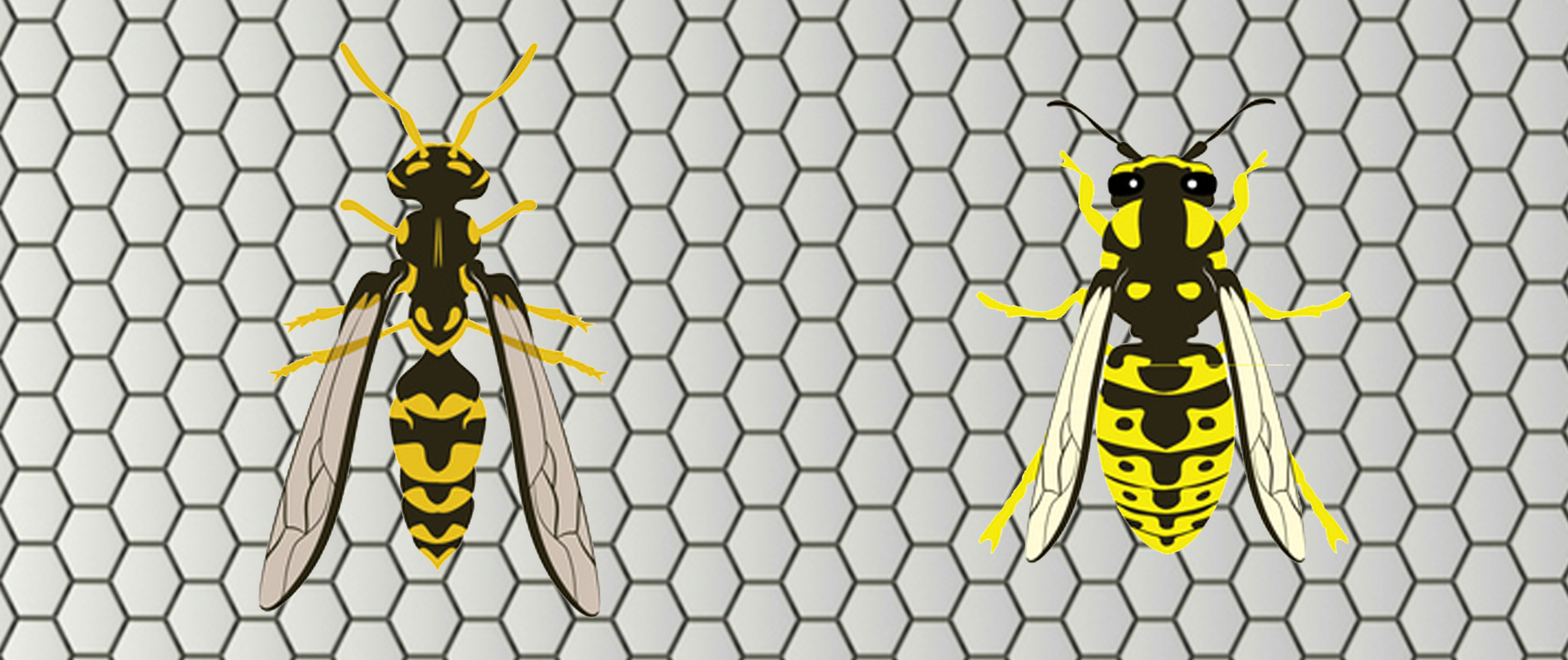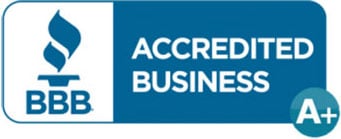Nothing disturbs an afternoon working in the garden or a nice evening on the patio quite like seeing a yellow and black pest buzz by. Is it a wasp? A yellow jacket? Something else? Learning to identify the pest is an important first step to getting rid of them and ensuring the safety of you, your family, or anyone visiting your property.
Yellow Jackets
Yellow jackets are actually the common name of a particular type of wasp. Despite being part of the same family, yellow jackets have several important differences, including their size and behavior. Here are some tips for identifying a yellow jacket:
- Yellow jackets are small and are boldly striped in black and yellow.
- They waver from side to side before landing.
- They build their nests underground, in the hollows of trees, or in the walls of buildings when there is an opening or crack in which to enter.
- They are more attracted to garbage and human food than wasps.
- They can aggressively defend with a painful sting.
Wasps
There are a few types of wasps common in Massachusetts. These include the bald-faced hornet, European hornet, and paper wasps. Across the U.S., paper wasps tend to be the most common. Here are some ways you can identify a paper wasp:
- Paper wasps build small, single-comb paper nests that are open from the bottom and hang from trees and shrubs or from the eaves or ceilings of buildings.
- They focus on hunting insects, so they’ll rarely approach you.
- They are more tranquil than yellow jackets.
Tips to Keep Yellow Jackets and Wasps Away
Wasps and yellow jackets have been known to rebuild their nests in the very same places, even after they’ve been completely destroyed. If you’re worried about their return, here are some tips to help keep them away:
- Reduce outside food sources such as trash and be thoughtful when cooking outdoors or having sweet beverages (ex: soda and beer) outside
- Change your landscaping or property by trimming any plants they may have built nests in
- Close off or restrict building openings they’ve been known to build nests in
- Use decoy nests to discourage them from returning to the same area

Get Protection from the Pros
Yellow jackets and wasps are no joke. While some are more aggressive than others, they are still dangerous. In fact, according to the CDC, there were 1,109 deaths from hornet, wasp, and bee stings between 2000–2017, or 62 deaths per year. Their stings are painful and they are disruptive to your summer and fall outdoor plans. If you need hornets, wasps, bees, carpenter bees, or yellow jackets removed from your property, contact the professional extermination team at Ford’s Hometown Services.








